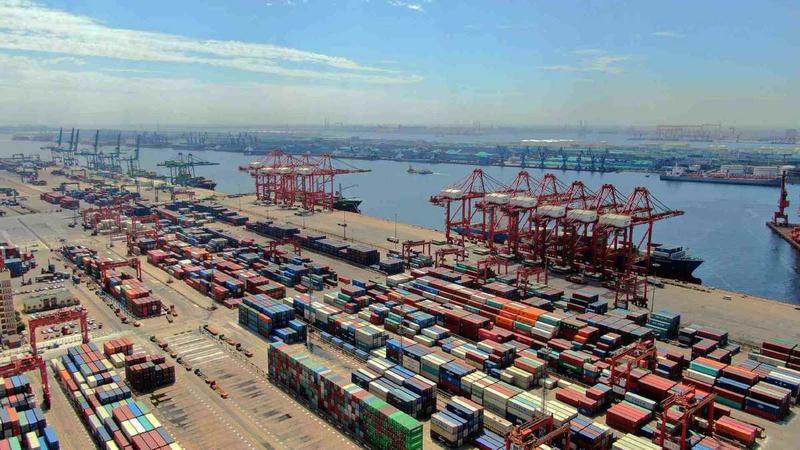 This Aug 14, 2019 file photo shows a bird's-eye view of the Tianjin Port. (PHOTO / XINHUA)
This Aug 14, 2019 file photo shows a bird's-eye view of the Tianjin Port. (PHOTO / XINHUA)
"Dual-circulation" does not mean seclusion under the domestic circulation model, but instead emphasizes further opening-up of the economy and bolstering ties with other nations, a senior economist said.
Experts said China's shift from export-driven growth to promoting the integration of both domestic and foreign markets highlighted the country's determination to foster high-quality development and nurture a key edge in global competition despite the headwinds
Wang Changlin, president of the Academy of Macroeconomic Research of the National Development and Reform Commission, said while the new economic development strategy focuses more on expanding the domestic market, it does not mean China will rely less on global integration.
"In times of economic globalization, no country or region can afford to pursue development with its doors closed," said Wang. "The strategy of adopting domestic economic networks as the mainstay does not mean closing doors to the outside world. Instead, it means China will open its doors wider to the outside world."
His remarks came after China advocated a new economic development pattern of "dual-circulation" that takes the domestic market as the mainstay while domestic and foreign markets complement each other.
"China will not only focus on introducing foreign technologies and capital, but also on opening more industries for foreign investment in fields like finance and services and promote the country's advancement into the mid-to high-end of the global industrial, supply, innovation and value chain."
Experts said China's shift from export-driven growth to promoting the integration of both domestic and foreign markets highlighted the country's determination to foster high-quality development and nurture a key edge in global competition despite the headwinds.
According to Wang, the earlier rapid development model is unable to adapt to the current situation and achieve new goals. "China needs to give a strong boost to unleash the potential of domestic demand and the development of domestic industrial chains in a more open environment. More efforts are also needed to improve the quality and efficiency of domestic circulation and enhance China's position in international circulation."
Wang said China has the solid foundation and conditions to build the new development pattern of "dual-circulation" with the support of its ultra-large domestic market, huge domestic demand potential, strong innovative capability, sufficient funding, a complete industrial support system and sufficient human resources.
ALSO READ: Easing tech bottlenecks vital for 'dual-circulation' growth
For instance, China is currently the world's second-largest consumer market, as retail sales of consumer goods exceeded 40 trillion yuan (US$5.89 trillion) in 2019, according to the National Bureau of Statistics.
Wang believes that China will surpass the United States as the largest consumer market in the near future due to the former's growing middle-income group and rapid improvement of people's living standards.
According to Wang, despite this year's COVID-19 impact, Chinese businesses are gradually returning to normalcy, with the consumption potential being unleased gradually. NBS data showed that retail sales rose by 0.5 percent in August from a year earlier, the first positive report for the year so far.
Wang expects China's economy to return to normal levels in the fourth quarter and the country will be able to meet the targets set in this year's Government Work Report.
READ MORE: China a 'bright spot' for global economy
Facing a grim and complicated situation both at home and abroad, China is now entering a critical period of economic and social transformation, and it needs to make a big push to ensure the "six priorities "and stability in six areas for steady economic momentum, boost domestic demand, further deepen supply-side structural reforms, promote industrial transformation and upgrade and expand opening-up at a higher level, he said.
More efforts are needed to make breakthroughs in core and key technologies, maintain industrial chain stability, further unleash the huge consumption potential, open more industries in fields like services, education, eldercare to foreign investment, stimulate market players' vitality, promote vocational training and modern education and build a modern logistics system, said Wang.


